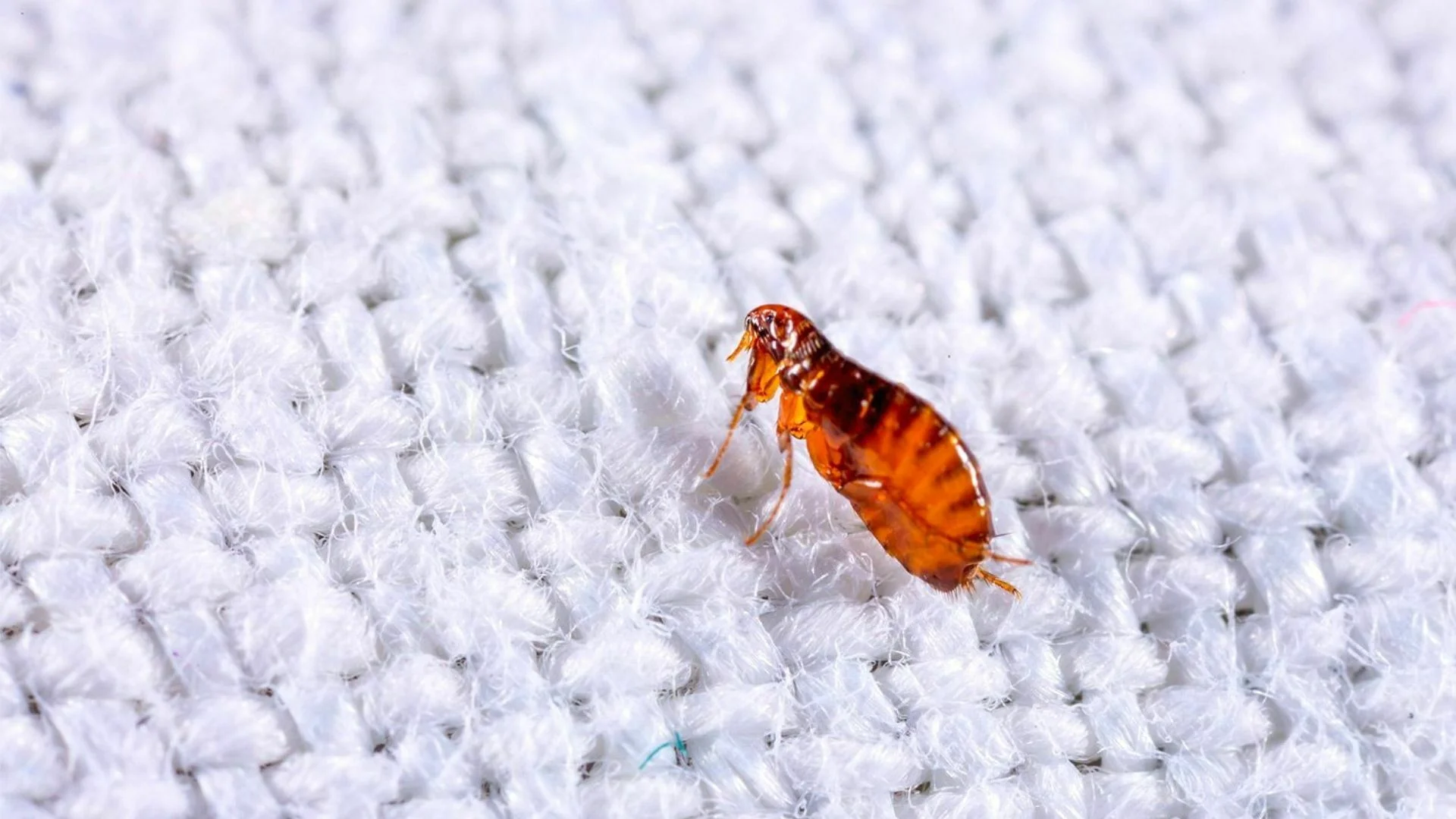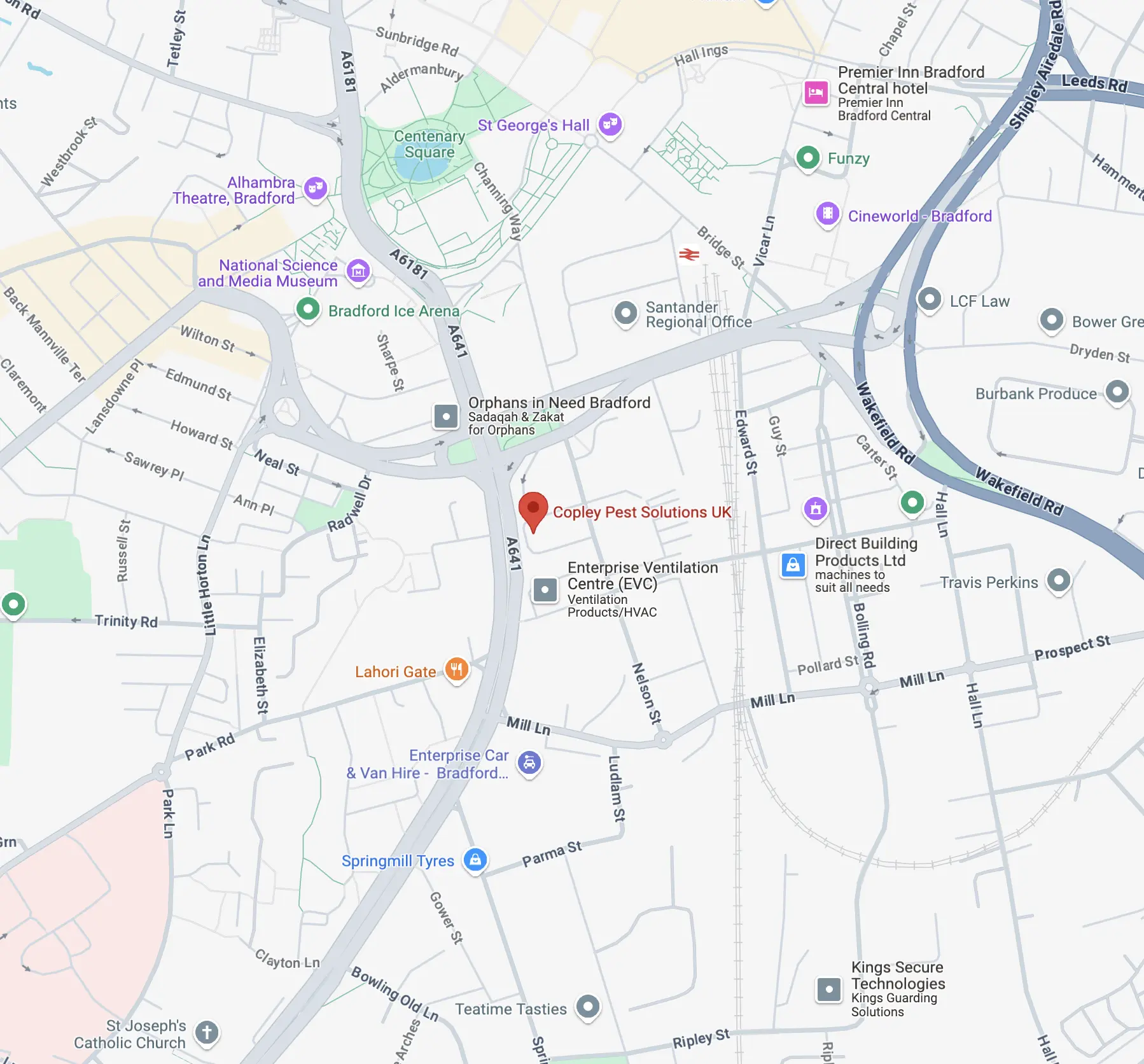
Flea Control
Contact your local technician
Fleas are small, wingless insects that are parasitic on warm-blooded animals. The most common flea species is the cat flea (Ctenocephalides felis)
The lifecycle of the flea is as follows: they start from an egg, then progress to larva, then to a pupa, and finally into an adult.
Tiny in appearance, a newly hatched flea will be black, aggressive, and hungry! Although when they have their first meal, fleas become larger and their body changes colour.
People often complain that flea treatments are ineffective, as you can still see small black fleas after completing the treatment. The reason for this is because pupas are resistant to chemicals. Therefore, fleas continue to hatch as the insecticides cannot infiltrate the flea pupal case. Ten fleas can reproduce to 250,000 in only 30 days!
Fleas are most likely to lay their eggs when your pet is relaxing. Moreover, the white eggs will fall off your pet and land onto the carpet or soil etc. Small blind larvae emerge from the eggs. These larvae move away from the light, delving down into the carpet, cracks in floorboards, or into the soil. They feed on protein, such as flea droppings of partly digested blood. They moult three times before forming a pupa. The larva changes into the adult (in the pupa).
In the summer months, a flea may hatch from the pupa approximately 7 to 14 days after it is formed. Having said this, the fleas may also not do anything for up to 18 months. Hatching of the flea from the pupa is triggered by nearby movement, predominantly during warm, moist weather conditions. After feeding on the host, the engorged female flea is ready to mate and lay eggs – about 24 hours after hatching. The female flea can lay up to 500 eggs (27 per day) over a lifetime which may span several weeks.

IMPORTANT INFORMATION FOR FLEA TREATMENT
To achieve optimal results with flea treatment, you must carry out the following:
- Indoors: Remove toys, clothes etc, from the floor. Some insecticides will affect fish. Cover any fish tank and turn off the filter before the treatment. Remove pets from the area to be treated: return them only after the treatment has dried.
- Treat the pet(s): For pet flea treatment, seek advice from your Veterinarian. The use of soaps or shampoos may reduce the residual action of the treatment.
- Be patient: it is normal to see fleas for several weeks after the treatment. Do not leave flea-infested areas undisturbed – movement helps hatch fleas.
- Do not vacuum: for at least 7 days after treatment. Dispose of the vacuum contents straight away from the premises.
- Leave your pet in the flea-infested areas: as it will help attract fleas. If you remove your pet from the infested area, the fleas will continue to hatch for about six weeks with normal ‘human’ activity.
You are most likely to see fleas when an area is newly disturbed, for example, when people get up in the morning and go outside. Moreover, you will not see the fleas in the same area later in the day. If the treatment works effectively, the fleas will hatch, retreat to the treated surface (carpet or soil which has been treated by our experts) or your pet (which we will have applied one of our products onto), causing the fleas to die within a few hours.
FLEA CONTROL: HELPFUL HINTS
- For optimum results carry out the environmental and on-animal treatments simultaneously at the same time.
- We strongly advise against avoiding flea-infested areas after the treatment as this can significantly reduce the effects of it. Don’t forget about the places where your pet likes to rest, such as the shed, spare room, and anywhere else.
- Although it can be tempting, please refrain from moving your pet from the infested area as if you do, you will become the only potential host.
- Don’t leave the problem to progress into a larger issue, as soon as you see fleas, treat them. After all, there is no need to suffer pain from flea bites.
- When you enter a vacant house, this will stimulate fleas waiting to hatch. This is most common in vacant rental and holiday houses.
- Be sure to ask a friend to walk/stomp through your house several times if you are going away on holiday post flea treatment. If someone cannot go around your house every day, ask them to go around on the day of your return as this will ensure the fleas hatch and die on the treated surfaces before you return!














